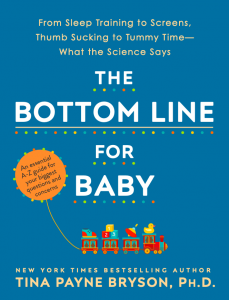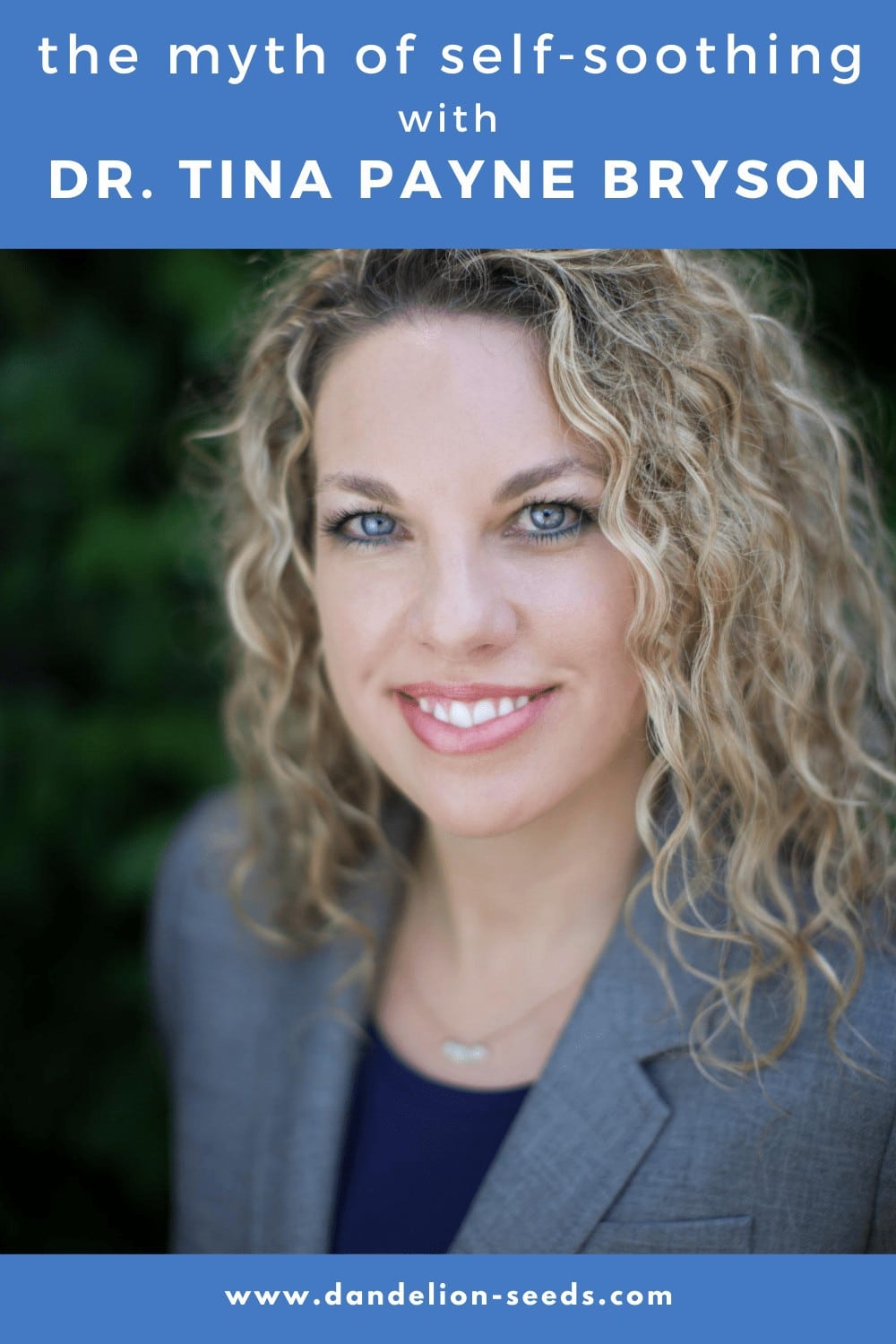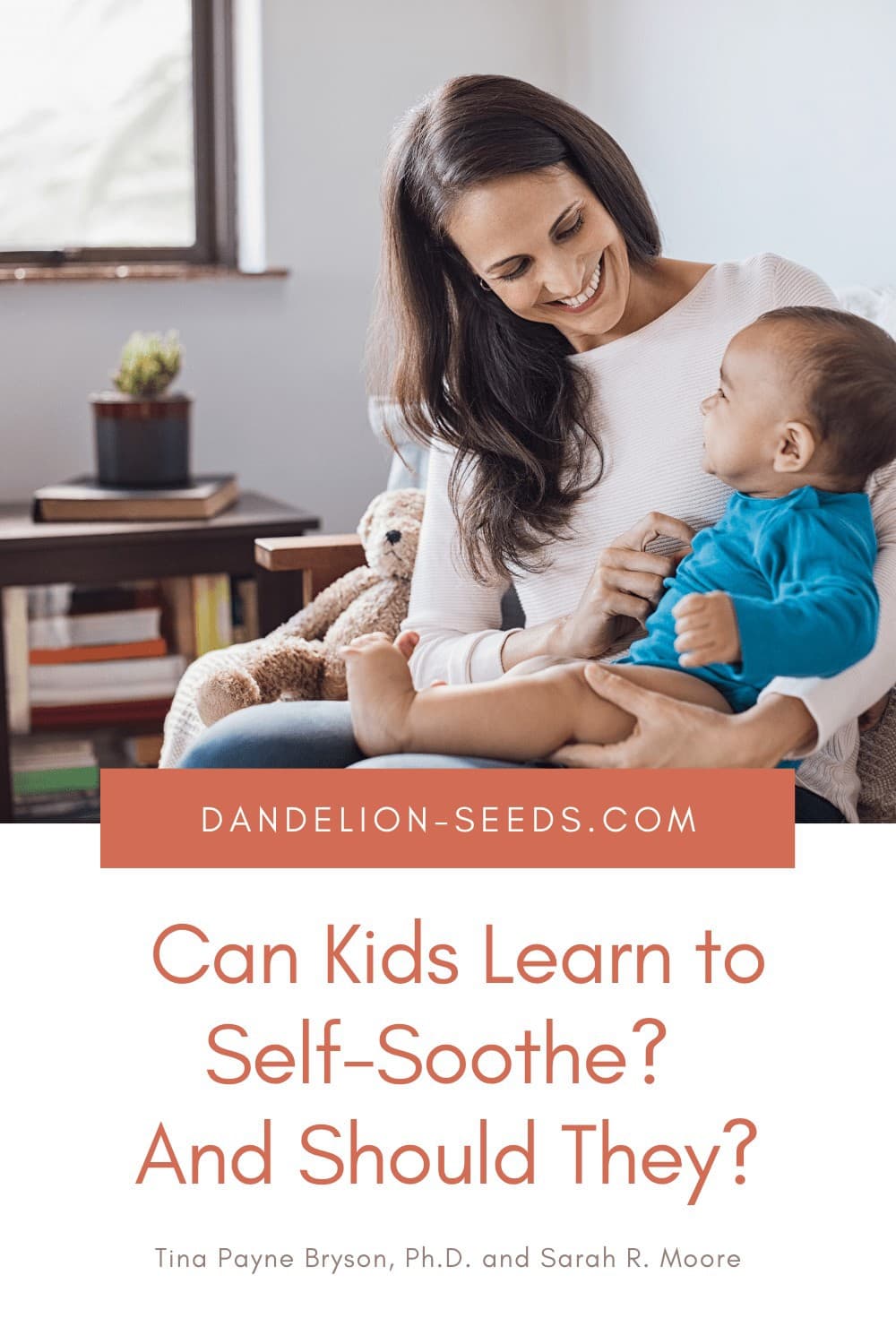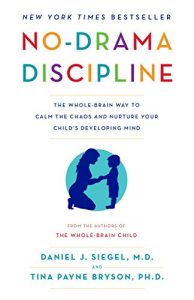
Sign in
Don't have an account with us? Sign up using the form below and get some free bonuses!

Below is Part 3 from my recent interview with Dr. Tina Payne-Bryson about her incredible new book, The Bottom Line for Baby. In this segment, she talks about the myth of self-soothing -- and how co-regulation is key to helping nurture our children's developing brains.
If you missed Part 1 or Part 2, you can catch up here.

You have given me goosebumps no fewer than 15 times as you're talking about all of these wonderful things that resonate so strongly with me. I'm sure they will with many, many parents who will be watching this.
You did touch on something that I would love to explore a little bit more. You talked about co-regulation versus self-soothing.
Self-soothing is certainly one of the myths that has perpetuated our society globally for more years than it should have at this point.
Can you talk a little bit about that? And what we should be doing instead?

Yeah, I love that. You know, it's funny. We use this term self-soothing and we all have different preferences about how we handle our own personal distress.
When something is upsetting to me -- when I'm anxious, when I'm angry, when I'm fearful, when I'm sad or disappointed -- I might want to be alone for a little while, but what I need most is to be connected to people. So the whole idea of self-soothing...even when I'm by myself, I'm with a self that has internalized all these relational experiences.
I can hear my mom's voice saying, "Just breathe, baby."
I can hear my husband saying, "I'm here if you need me." You know, all of those things. There is no "self."
We can get our super philosophical -- but we are held captive to one another's nervous systems.
I mean, if I go to take a drink -- I lift my sparkling water to take a drink and you're watching me, Sarah -- your mirror neurons are firing as if you were taking a drink as well.
So the whole idea of a separate self is kind of a silly idea, in one way, because the way our brains and our personalities and our souls and our spirits have developed have been in the context of relationship.
So I'm going to start with that [as it relates to co-regulation].
It's really, really ridiculous when we think about asking a baby with a super immature nervous system to self-soothe. - Tina Payne Bryson
It's such a ridiculous idea from a brain perspective and from a development perspective.
And when I talked about the idea of co-regulation -- what I mean by that is when the other person is falling apart, obviously, this could be your spouse or your sister or something too -- but we'll talk about [co-regulation] in terms of children.
Your child is having a tantrum. Or they're freaking out about something, or they're complaining about something and making a big deal about something you think is ridiculous; all of those moments are opportunities for you to build your child's brain through co-regulation.

Co-regulation looks like this: my kid's falling apart. They're super angry or they're super anxious, and I show up in that moment with empathy and also boundaries. We can talk about that, too.
I say, "You're so upset." "You're so angry" or "You're afraid." "I'm right here with you. How can I help? How can I comfort you? That's the Seen and Soothed part of the four Ss.
So my son's in the tub. He's upset about bath time being over. He's overtired and I say, "Hey, it's time to get out" and he says, "I'm not getting out."
He's about four at the time.
He says, "I'm not getting out. This isn't even a bathtub. So you can't make me get out of it."
He's just not even being, you know, I don't even know what he's saying, but I don't know how to argue with that.
Some of the biggest questions I get when I talk about soothing our children, and co-regulation with our children, are these:
Here's why it's not.
In that moment. I say to him, "It's time to get out. You can either get out or I will help you get out." I set a boundary, and boundaries help kids feel safe.
So, this is not at all permissiveness.
And by the way, the whole point of discipline is to teach and build skills so that children become self-disciplined.
The way they learn the most -- the time they're most receptive to learning -- is when they are regulated. - Tina Payne Bryson
So in the name of discipline, and by that, I mean teaching, what I need to do, #1, is to get my kid regulated so that he can listen and be open and receptive to addressing the behavior.
The quickest way and the best way to get your kid to listen and be receptive and to be an effective disciplinarian is to get them regulated first.
So in this moment, I say to my little guy who just walked by, who's 14 tomorrow and at least six inches taller than I am -- and I have permission to tell this story -- is I say, "It's time to get out. Or you can get out."
And he says, "I'm not getting out."
So, I say as gently as I can, "I will lift you out of the tub."
So I'm predictable.
I tell him what's happening as I'm lifting him out, and he is screaming and kicking and losing his mind.
I say, "You're so mad that you have to get out. You were having fun and you're really mad you have to get out of the tub. Is that right?"
He's screaming and yelling. He's not even really listening to me.
But he's hearing the empathy and my voice, he's feeling the calm I have in my body, because I have to make sure I get centered. - Tina Payne Bryson
[For co-regulation], we have to make sure we're calm first. If we're not, we need to not touch our children's bodies or open our mouths.
We need to say, "I need a minute to calm down" and to regulate ourselves first, because if we want to be the haven in the storm, we can't be the storm. So we have to calm our internal storm first.
As I'm lifting him out, I'm saying, "You're so mad bath time is over."
I wrap the towel around him and I say, "You can cry if you need to cry. It's okay to have big feelings and be upset. I'm right here with you."
So, basically I'm giving him the opposite message of what we do a lot in our culture, which is to say, "You go calm down and when you're ready to be nice, I will be in relationship with you." - Tina Payne Bryson
I want my kids to know from repeated experience that at their worst, that is when they need me the most. And I will be there for them at their worst.
That's what I want in my relationships.
I want my husband to say, "At your worst, I will still show up for you."
That's what we all need. In that moment, my son is crying I'm saying "no" to a behavior. "You can't stay in the bathtub." But I'm saying "yes" to whatever you feel and however you're going to express it.
And I can handle your big feelings. I'm going to help you get regulated again. I'm going to co-regulate with you. Then, you're going to learn that you can handle your big feelings. And, you're going to learn how to calm your own nervous system by reaching out to someone else, or if you're alone, how to do it.
And here's why. Here's the science. Just like muscles, if I lift weights over and over, if I do reps, my muscles get stronger. That's how the brain works when it comes to regulation.
So what happens, is if we give our kids multiple repeated experiences of going from a falling apart, dysregulated state back into a regulated, calm receptive "Yes Brain" state, then their brain learns how to do it for themselves.
Co-regulation is what teaches kids how to self-regulate. - Tina Payne Bryson
We cannot spoil our kids with too much attention, too much affection, too much co-regulation, too much love.
What gets in the way is if we don't have good boundaries.
I would say that firm boundaries, high expectations that we clearly communicate to our kids -- and there are 60 years of research that support this -- that having firm and good boundaries and expectations, and being completely loving and present and nurturing and comforting should go together.
If you're just about boundaries and expectations, and rules and discipline, they're not going to be as receptive to learning.
The way we get them to embrace those things and learn how to say "no" and how to put their brakes on, is by having them in receptive states that come from those connections and that co-regulation.
Stay tuned for our next segment, where Tina Payne Bryson talks about the scientific support for gentle parenting.
Additional recommended reading by Tina Payne Bryson, Ph.D. and Daniel J. Siegel, M.D.:

